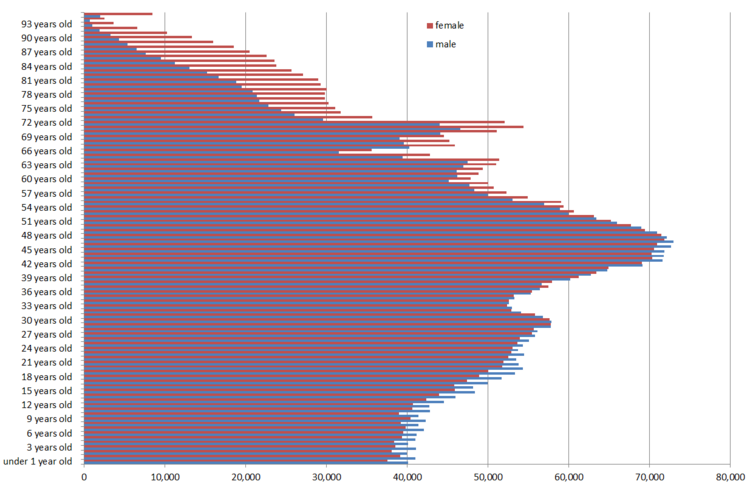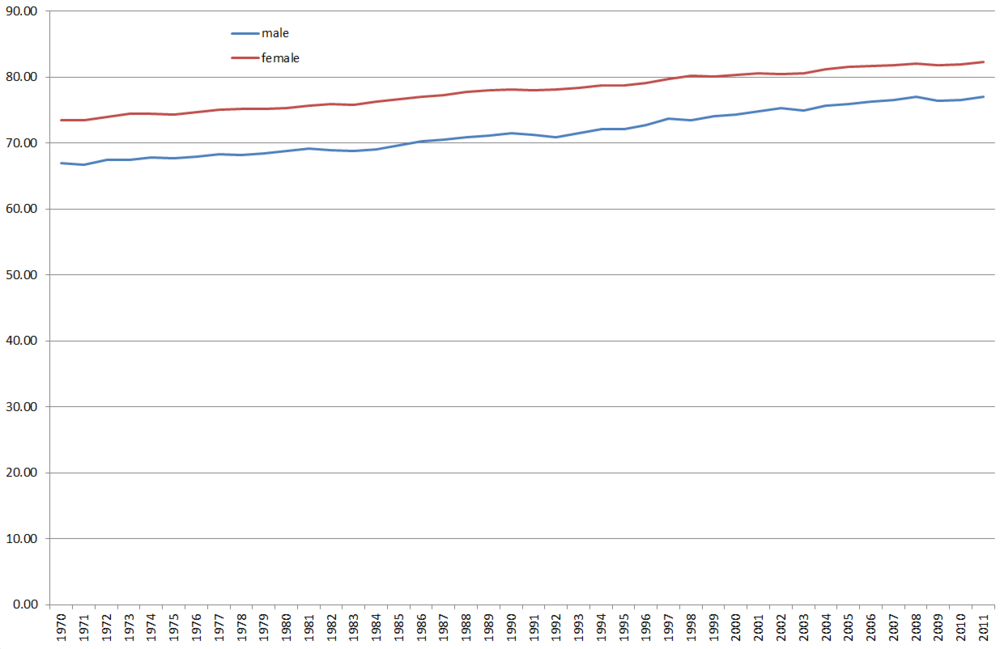Difference between revisions of "Vienna"
(→Migration) |
(→Population stocks on 1 January 2012 by age and sex - total population) |
||
| Line 9: | Line 9: | ||
====Population stocks on 1 January 2012 by age and sex - total population==== | ====Population stocks on 1 January 2012 by age and sex - total population==== | ||
| − | [[file:1_Vienna_Population.PNG| | + | [[file:1_Vienna_Population.PNG|750px]] |
'''Annotations''' | '''Annotations''' | ||
Revision as of 07:52, 11 July 2013
Contents |
1 Vienna: Demographic indicators
1.1 Population
1.1.1 Population stocks on 1 January 2012 by age and sex - total population
Annotations
Q: STATISTICS AUSTRIA Population at the beginning of the year since 1982:
Origin of data
Until 2001, statistics on vital events was based on the results population estimates carried out starting from the state of the last population census on the basis of demographic equation. The population figure was estimated on the basis of provinces according to age, sex and four groups of nationalities.
Since 2002, vital events statistics has been based on the registrations of main residences quarterly transmitted by the Central register of residents (CRR). These data are constantly stored within a demographic database system and analysed together with the data on change of main residence (migration statistics) according to demographic criteria. The resident population consists of persons staying at least 90 days (including key day) at a place (registration of main residence).
1.2 Fertility
1.2.1 Total fertility rate (TFR), 1961-2011 - total population
Annotations
Q: STATISTICS AUSTRIA
T: Total suppression
1.3 Mortality
1.3.1 Life expectancy by sex, 1970-2011 - total population
Annotations
Q: STATISTICS AUSTRIA
1.4 Migration
Annotations
Q: STATISTICS AUSTRIA
International migrations and migrations within Austria acc.to NUTS 3 regions:
Origin of data
Migration statistics is compiled by Statistics Austria and is based on the data (registrations and deregistrations) of the ZMR (central register of residents).
Important commentary
The results of the sample survey 2006 (survey date 31-10) differed from the results of vital statistics to an extent of about 14 000 persons. To protect consistency with the survey results, a revision of the current population statistics as well as of migration statistics was necessary. This revision concerns the years from 2002 to 2007.
Migration movements (immigration and emigration) are changes of main residence within the borders of areal units (internal move), or cross-border changes within Austria (internal migration), or cross-border changes outside Austria (external migration). This applies to minimum stays (sustained registration of main residence) of 90 days.
Depending on the scale of the area unit concerned, one and the same process of migration will be classified as internal move or as internal migration. Thus, a registration change between two communes of the same political district is internal migration on the c ommunal level, whereas, on the level of political districts, it is regarded as an internal move. FOR THIS REASON, NO AGGREGATION TO SUPERORDINATE AREA UNITS IS POSSIBLE, AND A SEPARATE QUERY IS REQUIRED.
The sum generated by internal moves and internal migrations in all area units of an adminstrative level (provinces, NUTS 3, political districts, communes) always remains the same and corresponds to the sum of internal migrations in Austria.
If in case of external migration no clear attribution to a country of origin/target or nationality was possible the movement was attributed to the category "unknown".


